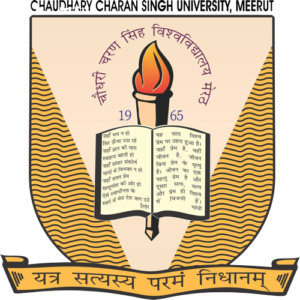
B.Sc. in Visual Communication in Distance Education: Admission Process, Eligibility Criteria, Course Fees, Subject, Syllabus, Duration, Highlights, F&Q:
B.Sc. in Visual Communication in Distance Education Overview:
- Degree Title:
- Bachelor of Science (B.Sc.) in Visual Communication.
- Duration:
- The typical duration of a B.Sc. program is three to four years, but this may vary depending on the country and specific university.
- Objective:
- Visual Communication programs aim to equip students with skills and knowledge related to conveying messages and information through visual elements. This may include graphic design, multimedia, animation, and other visual media.
- Curriculum:
- The curriculum may cover a range of subjects, such as:
- Graphic Design
- Typography
- Photography
- Animation
- Web Design
- Multimedia Production
- Visual Culture Studies
- Communication Theory
- Digital Media
- Practical Training:
- Many programs incorporate hands-on projects and internships to provide students with practical experience in applying theoretical concepts.
- Distance Education:
- In a distance education format, coursework and materials are typically delivered through online platforms. Students may engage in virtual classes, access online resources, and submit assignments remotely.
- Career Opportunities:
- Graduates may pursue careers in various fields, including graphic design, advertising, media production, web development, and other visual communication-related industries.
- Admission Requirements:
- Admission requirements vary by institution, but they generally include a high school diploma or equivalent. Some programs may require a portfolio or evidence of artistic and creative abilities.
- Technology Requirements:
- Students in distance education programs may need access to a computer with reliable internet connectivity and software tools relevant to visual communication.
- Accreditation:
- It’s important to choose a program offered by an accredited institution to ensure the quality of education and recognition of the degree.
- The curriculum may cover a range of subjects, such as:
B.Sc. in Visual Communication in Distance Education Eligibility:
- Educational Qualifications:
- Candidates are typically required to have completed their higher secondary education or an equivalent qualification. This often means having a high school diploma or its equivalent.
- Minimum Marks:
- Some institutions may have minimum academic performance criteria, such as a certain percentage of marks in the qualifying examination.
- Specific Subjects:
- There may be no specific subject requirements for a B.Sc. in Visual Communication, or it may be necessary to have a background in arts, design, or a related field.
- Portfolio Submission (Optional/Required):
- Certain programs may request a portfolio showcasing the applicant’s creative work, especially if the focus is on visual arts, graphic design, or related fields. This could be optional or a mandatory part of the application.
- Entrance Exams (if applicable):
- Some universities may conduct entrance exams as part of the admission process to assess the candidate’s aptitude, creativity, or knowledge in relevant areas.
- English Language Proficiency:
- For international students or in programs conducted in English, proficiency in the English language may be required. This could be demonstrated through standardized tests like TOEFL or IELTS.
- Age Limit:
- Some institutions may have age restrictions, but this is less common for undergraduate programs.
B.Sc. in Visual Communication in Distance Education Why to do?
- Flexibility:
- Distance education allows you to study from anywhere, providing flexibility in terms of location and schedule. This is particularly beneficial for individuals who may have work or family commitments.
- Work While Studying:
- If you are currently working or have other responsibilities, pursuing a B.Sc. in Visual Communication through distance education allows you to balance your studies with your professional and personal life.
- Cost-Effective:
- Distance education programs often have lower tuition fees, and you can save on additional costs associated with on-campus living, commuting, and other expenses.
- Accessible Resources:
- Online programs provide access to a variety of digital resources, including lectures, e-books, and multimedia materials. This can enhance your learning experience and exposure to the latest industry trends.
- Diverse Learning Environment:
- Distance education often attracts a diverse group of students from different geographical locations and professional backgrounds. This diversity can enrich your learning experience by exposing you to different perspectives and ideas.
- Portfolio Development:
- Visual Communication programs usually involve practical projects and assignments. Distance education allows you to build a portfolio of work that can showcase your skills and creativity, which can be valuable when entering the job market.
- Self-Paced Learning:
- Some distance education programs offer self-paced learning, allowing you to progress through the coursework at a speed that suits your individual learning style.
- Career Advancement:
- A B.Sc. in Visual Communication can open doors to various career opportunities in design, multimedia, advertising, and related fields. Distance education allows you to gain a degree while continuing to work and potentially apply your new skills directly in your current job.
- Global Networking:
- Engaging in distance education often involves interacting with peers and instructors from different parts of the world. This can help you build a global network of contacts within the visual communication industry.
- Personal Development:
- Pursuing higher education, even through distance learning, is a significant personal achievement. It can enhance your skills, boost your confidence, and provide a sense of accomplishment.
B.Sc. in Visual Communication in Distance Education Highlights:
Aspect | Description |
Degree Title | B.Sc. in Visual Communication |
Duration | Typically 3-4 years |
Objective | Equipping students with visual communication skills, including graphic design, multimedia, and animation. |
Curriculum | Graphic Design, Typography, Photography, Animation, Web Design, Multimedia Production, Visual Culture Studies, Communication Theory, Digital Media. |
Practical Training | Hands-on projects and internships to provide practical experience. |
Distance Education Format | Online delivery of coursework, virtual classes, and remote submissions. |
Career Opportunities | Graphic design, advertising, media production, web development, and related fields. |
Admission Requirements | High school diploma or equivalent, minimum academic performance, and possibly a portfolio submission. |
Technology Requirements | Access to a computer, reliable internet, and relevant software tools. |
Accreditation | Choose programs offered by accredited institutions for quality and recognition. |
Flexibility | Study from anywhere, allowing for flexibility in location and schedule. |
Cost-Effective | Potentially lower tuition fees compared to on-campus programs. |
Work While Studying | Ideal for individuals with work or family commitments. |
Diverse Learning Environment | Attracts students from diverse backgrounds, enhancing the learning experience. |
Portfolio Development | Involvement in practical projects for building a portfolio of creative work. |
Self-Paced Learning | Some programs offer self-paced learning options. |
Global Networking | Interaction with peers and instructors from different geographical locations. |
Personal Development | Significant personal achievement, enhancing skills and boosting confidence. |
B.Sc. in Visual Communication in Distance Education Admission Process:
- Research and Choose a Program:
- Explore different universities or institutions that offer a B.Sc. in Visual Communication through distance education. Consider factors such as accreditation, curriculum, faculty, and reviews.
- Check Eligibility Criteria:
- Review the eligibility criteria set by the university. This usually includes educational qualifications, minimum marks, and any specific subject requirements.
- Online Application:
- Complete the online application form provided by the university. Submit all required information, including personal details, educational background, and any additional documents.
- Application Fee:
- Pay the application fee, if applicable. Some universities charge a fee for processing applications, and this is typically paid online.
- Document Submission:
- Upload or send necessary documents as part of the application process. This may include:
- High school transcripts or equivalent certificates.
- Identification documents.
- Passport-sized photographs.
- Any additional documents required by the university, such as a portfolio or proof of English language proficiency.
- Portfolio Submission (if required):
- Some programs may require the submission of a portfolio showcasing your creative work. Ensure that you follow specific guidelines provided by the university for portfolio submission.
- Entrance Exam (if applicable):
- Some universities may conduct an entrance exam to assess your aptitude, creativity, or knowledge in relevant areas. Prepare for and take the exam as required.
- Interview (if required):
- In some cases, an interview may be part of the admission process. This could be conducted in person or through video conferencing.
- Review and Admission Decision:
- After submitting your application, the university’s admission committee will review your materials. The decision will be communicated to you within a specified timeframe.
- Offer Acceptance and Enrollment:
- If you receive an offer of admission, carefully review the terms and conditions. Accept the offer and proceed with the enrollment process, which may involve submitting additional documents and paying tuition fees.
- Orientation (if provided):
- Some universities offer orientation sessions or materials to help you get acquainted with the program structure, online learning platforms, and support services.
- Commencement of Classes:
- Once enrolled, you will receive information about the start date of classes. Be prepared to actively participate in virtual classes and complete assignments as per the course schedule.
- Upload or send necessary documents as part of the application process. This may include:
B.Sc. in Visual Communication in Distance Education Top Colleges for the Course:
- Indira Gandhi National Open University (IGNOU):
- IGNOU is one of the largest open universities in the world, offering a variety of undergraduate and postgraduate programs through distance education, including arts and design-related courses.
- Sikkim Manipal University (SMU):
- SMU’s Directorate of Distance Education offers various programs, and it’s known for its flexibility and accessibility for students.
- Annamalai University:
- Annamalai University’s Directorate of Distance Education provides a range of programs, including those in arts and communication.
- University of Madras – Institute of Distance Education (IDE):
- The University of Madras offers distance education programs through its Institute of Distance Education, and it is recognized for its diverse course offerings.
- Symbiosis Centre for Distance Learning (SCDL):
- While SCDL is known for its management programs, it also offers various arts and design-related courses through distance education.
- Karnataka State Open University (KSOU):
- KSOU is a recognized open university offering a variety of undergraduate and postgraduate programs through distance education.
- B.R. Ambedkar Open University (BRAOU):
- BRAOU is located in Hyderabad and provides opportunities for distance education in various disciplines.
B.Sc. in Visual Communication in Distance Education Syllabus:
- First Year:
- Introduction to Visual Communication
- Fundamentals of Design
- Drawing and Illustration
- Photography Basics
- Computer Applications in Visual Communication
- Principles of Animation
- Typography
- Communication Theory
- Second Year:
- Graphic Design
- Digital Imaging
- Web Design
- Multimedia Production
- Advertising and Branding
- Visual Culture Studies
- Audio-Visual Communication
- Scriptwriting for Visual Media
- Third Year:
- Advanced Graphic Design
- Advanced Animation Techniques
- Interactive Design
- Design Thinking
- Portfolio Development
- Project Management in Visual Communication
- Digital Marketing and Social Media
- Internship/Project Work
B.Sc. in Visual Communication in Distance Education FAQ Answer with Question:
- Q: What is the duration of the B.Sc. Visual Communication program through distance education?
- A: The typical duration of the program is three to four years, but this can vary depending on the specific university and its curriculum.
- Q: Can I pursue B.Sc. Visual Communication through distance education if I am currently working?
- A: Yes, distance education provides flexibility, allowing you to balance your studies with work or other commitments.
- Q: Are there any specific eligibility criteria for admission to the B.Sc. Visual Communication program?
- A: Eligibility criteria usually include a high school diploma or equivalent, and some programs may have minimum academic performance requirements.
- Q: Is a portfolio submission required for admission?
- A: Some programs may request a portfolio showcasing your creative work, while others may not require it. Check the admission requirements of the specific university.
- Q: How are classes conducted in distance education for B.Sc. Visual Communication?
- A: Classes are typically conducted online, utilizing virtual platforms for lectures, discussions, and project submissions.
- Q: What are the career opportunities after completing B.Sc. Visual Communication through distance education?
- A: Graduates can pursue careers in graphic design, advertising, media production, web development, and related fields.
- Q: Are there practical components in the B.Sc. Visual Communication distance education program?
- A: Yes, many programs include hands-on projects, assignments, and sometimes internships to provide practical experience.
- Q: Can I study B.Sc. Visual Communication from any location?
- A: Yes, distance education allows you to study from anywhere, providing geographical flexibility.
- Q: How do I apply for admission to a B.Sc. Visual Communication program through distance education?
- A: You can apply online through the official website of the university, submitting the required documents and paying any applicable application fees.
- Q: Are there any entrance exams for admission to B.Sc. Visual Communication through distance education?
- A: Some universities may conduct entrance exams to assess aptitude, creativity, or knowledge. Check the admission guidelines of the specific institution.

















